The full video of Lear is Here can be watched as video chapters with short notes.
-
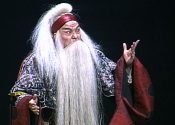
Lear is Here – Full Video
Lear is Here dir. Wu Hsing-kuo, Taiwan, 2001
In 2001, Wu Hsing-kuo, the artistic director of the Contemporary Legend Theatre (CLT, Taipei), returned to the stage after disbanding his company two years earlier. His solo performance of King Lear reflects his own personal struggle to rediscover his own identity as an actor and to define the mission of the CLT in the 21st century: “to safeguard tradition but also to allow it to confront modernity, thereby giving birth to a third approach that will extend the future of Beijing opera.” Continue reading
-

1. Video Prologue: Highlights from the Production
Lear is Here dir. Wu Hsing-kuo, Taiwan, 2001
-
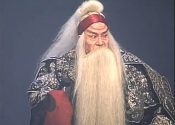
2. The Play: Lear’s Solo Dance in Costume
Lear is Here dir. Wu Hsing-kuo, Taiwan, 2001
Wu begins with a 27-minute solo performance as King Lear dressed in a version of the traditional costume for the lao sheng role, as an old man of high authority, in beautiful robes and long white beard.
—
[Chapter contains an exercise.] Continue reading -
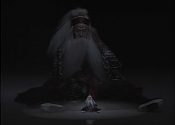
3. “This is not Lear:” Wu Removes Costume
Lear is Here dir. Wu Hsing-kuo, Taiwan, 2001
Who is it that can tell me who I am? Li’Er wakes up on stage and removes the hairpiece and beard of the jingjiu costume to reveal the performer beneath, who speaks in quiet, everyday tones at first: “I am back, this decision is tougher than entering some monastery.”
—
[Chapter contains an exercise.] Continue reading -
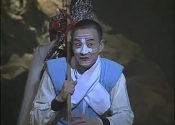
4. Fool, Kent and Lear
Lear is Here dir. Wu Hsing-kuo, Taiwan, 2001
Part 1: The stage lights come up to reveal a new set, with large boulders scattered on the stage, and a sprightly motif on the flute signals the entrance of The Fool to great applause, carrying the traveler’s bundle of Li’Er’s martial costume tied to a stick.
—
[Chapter contains an exercise.] Continue reading -
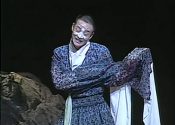
5. Goneril, Regan and Cordelia
Lear is Here dir. Wu Hsing-kuo, Taiwan, 2001
The Fool, wearing Li’er’s beard, has asked his three daughters to declare their love in Ch 4. Now, Goneril, Regan and Cordelia appear in turn. Wu changes costume behind one of the rocks upstage and appears (still bareheaded with a short haircut and still wearing the characteristic make-up of the fool) in a silk robe for Goneril, and then a long skirt as he morphs into Regan and then Cordelia.
—
[Chapter contains two exercises.] Continue reading -
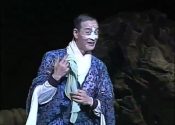
6. Goneril, Regan, Edmund and Gloucester
Lear is Here dir. Wu Hsing-kuo, Taiwan, 2001
A very compressed version of the plotting of Goneril and Regan against Lear, the blinding of Gloucester by Regan and Cornwall, the daughters rivalry for the love of Edmund and their deaths — Goneril forces Regan to drink poison and then, after a line or two of lament in song, kills herself with a dagger. Continue reading
-
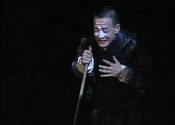
7. Edgar, Edmund and Gloucester
Lear is Here dir. Wu Hsing-kuo, Taiwan, 2001
This sequence begins with the blinded Goucester’s cries of pain. He wonders whether the heavens have punished him, and acknowledges that he has done his son Edgar wrong. Edmund enters. Only now, late in Wu’s play, does he speak an adapted version of the famous soliloquy. Continue reading
-
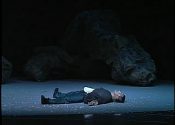
8. The Cliffs of Dover
Lear is Here dir. Wu Hsing-kuo, Taiwan, 2001
Wu dies as Edmund, and quickly arises from the stage as Gloucester, repeating “Amiduofo.” This is the Mandarin name of Amitabha Buddha and Gloucester is therefore calling upon Buddha, but he is also seeking, as in Shakespeare’s text, the cliffs of Dover (“Duofo”), so that his despairing pilgrimage and the name of the Buddha, widely used in prayers and chants, are blended.
—
[Chapter contains an exercise.] Continue reading -
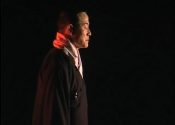
9. The Player’s Soliloquy
Lear is Here dir. Wu Hsing-kuo, Taiwan, 2001
This final sequence begins with a Buddhist chant offstage, as Wu enters. According to the program notes to the 2001 production the “role” Wu plays now is “Wu Hsing-kuo,” — himself. Continue reading